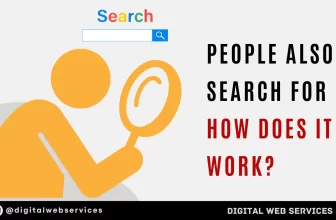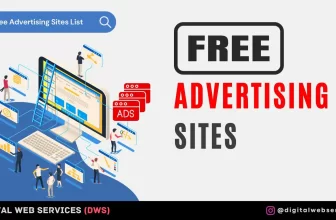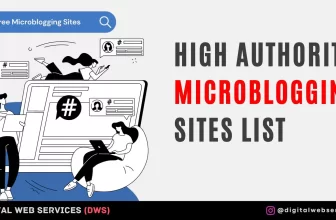
More often than not, marketers have search engine optimization (SEO) and pay-per-click (PPC) in their web traffic toolbox but rarely use the two together. They either swear that search engine optimization alone will reap long-term benefits and traffic or that PPC can net impressive results quickly.
But can they work together?
In short, we reply with a resounding yes.
PPC advertising and online advertising, similar to SEO, has the potential to enhance the effectiveness of the high-quality content that your team has developed by attracting traffic, producing leads, elevating sales, increasing online visibility, and amplifying views.
By integrating PPC with SEO techniques, you can more effectively direct quality leads to your content at the outset. You may promptly assess the efficacy of your approach, such as identifying which language is most effective in connecting with customers and prospects.
Rather than disregarding PPC in favor of SEO, utilize it to enhance your content marketing approach and improve performance with these four tactics.
In this article, I will share 4 Tactics for Using SEO & PPC in synergy for Better Results.
1. Use PPC Ads to Inform Content Strategy
Relying solely on SEO can result in a slow and tedious trial-and-error approach to identifying target keywords that lead to conversions. Moreover, this approach must include opportunities to reach key customers where they spend the most time: social and search. With PPC ads, you can leverage these channels to quickly and reactively test keywords.
Also, if you consider targeting multiple global audiences, investing heavily in translating your website, and doing international SEO is better to do tests first using PPC and see the results.
According to Statista, Americans spend nearly 2.5 hours on social media sites daily, with dozens of ads targeting users and their friends’ interests. Additionally, the average internet user conducts 3-4 searches per day on Google, with clicks on ads outnumbering clicks on top organic listings by nearly 2:1.
By utilizing PPC ads and analyzing successful PPC keywords, you can identify what resonates with customers on platforms like Google and boost click-through rates by up to 15%. This knowledge can inform your SEO strategy and help produce more relevant content.
To get the most out of a PPC-informed content strategy, follow these three tips:
- Conduct A/B testing by running multiple ads for the same content with different headlines to determine which keywords and copy resonate most with your audience. Once you complete the test, update the content headline to match the best-performing ad. For even more insights, test various landing pages and their content.
- To see what people are searching for when exposed to your ad, navigate to the “Search Terms” section of the report. Download this report to inform phrases or keywords for your SEO content.
- Use commercial intent keywords (including words like buy, discount, coupon, trial, etc.) to incentivize customers to engage with specific products and landing pages, moving them along your sales funnel. Use the same keywords in CTAs on your promoting page to continue ushering customers down the sales funnel and boosting SEO.
2. Use PPC Ads to Guide Your Potential Customers Through The Sales Funnel
Effective marketing teams understand that a well-designed sales funnel key to driving conversions, and quality content is crucial in guiding customers through their buying journey. However, relying solely on organic traffic to lead customers to compelling content can leave your funnel underfed and may not catch the attention of customers ready to purchase today.
To enhance your SEO strategy that utilizes competitive keywords and topical on-page content, incorporate PPC advertising to encourage customers to engage with your content and products more frequently than they otherwise might. This provides additional touchpoints along the customer journey, ensuring buyers see content that motivates them to use your product or services.
An effective way to improve the customer experience with a combined PPC and SEO strategy is to use product- and audience-specific ads to direct buyers to customized landing pages. These pages should have headlines, messaging, and CTAs aligning with the ad the customer clicked on, creating a seamless experience.
Research has shown that integrating PPC and SEO can significantly improve overall marketing performance. A study conducted by Google found that businesses using both PPC and SEO saw a 25% increase in clicks and a 27% increase in profits compared to companies that only used one of these tactics.
Using a dual PPC and SEO approach, you can optimize your sales funnel and provide customers with a more tailored experience, leading to increased conversions and revenue for your business.
3. Use PPC Ads to Get More Digital Estate in SERP & Get More Traffic
Although it may seem redundant to pay for an ad on a search engine results page (SERP) where your content already ranks organically, this double effort can improve your brand awareness, click-through rates (CTRs), and the likelihood that customers will remember your products and services even after they’ve left the page.
Users are likelier to click on the top-of-page results and paid advertisements than results lower down on the page. The top result typically receives 30% of the clicks, while the click-through rate for result #3 is only 10%.
Creating two listings for your business on each SERP, you can make a passive brand affinity that increases your repeat business’s click-through rate. When customers are ready to buy, your company will be top-of-mind among those who have seen these multiple listings.
Multiple SERP results also encourage new customers to click on your results faster. To enhance this strategy, you can create customized content where the title and call-to-action match the ad, preventing bounces when customers are met with messaging that doesn’t align with the content they were drawn in by.
4. Use PPC & Social Media to Drive Traffic Quickly
While quality SEO content takes time to generate traffic, PPC and online marketing can provide immediate results. PPC advertising can target ideal customers who spend their time online and can be especially useful for new websites, blogs, or products.
Consider these five opportunities to promote content using ads:
- To maximize the reach and momentum of your most successful content on Facebook, utilize the Boost Post feature. This allows you to promote posts that have generated clicks and engagement in the past, reaching a wider audience.
- When creating social media campaigns, don’t just target your existing customers. Targeting their friends or look-alike audiences is essential, broadening your reach and potentially gaining new customers.
- LinkedIn’s Sponsored Updates feature, similar to Facebook’s Boost feature, can be leveraged to promote long-form content and landing pages on the platform. B2B companies, in particular, can benefit greatly from using LinkedIn for advertising. According to a case study, a B2B SaaS company achieved an ROI almost six times higher on LinkedIn-promoted posts than on Google Ads.
- Install, configure, and create a remarketing campaign around your content using the Facebook pixel. Keep track of who views your blog posts and use this information to target them with personalized ads that encourage them to purchase or engage with your content further when new articles are released. Consider incorporating fresh content into your social media remarketing campaigns to prevent ad fatigue when running mostly bottom-of-the-funnel ads. Doing so can help sustain the interest of your audience and encourage them to stay engaged with your brand.
- On Twitter, publish 4-5 tweets using different headlines to promote the same content. Put these together in a campaign and use the one that performs best to as a possible title for your content piece.
PPC ads can generate buzz for your brand and boost customer engagement even before your SEO efforts gain enough traction and traffic, targeting the keywords you want to rank for.
SEO vs. PPC in Content Marketing should become SEO & PPC
When PPC and SEO are integrated, they can form a formidable marketing team that offers a strong marketing approach for your business.
Using PPC advertising and organic marketing – SEO to potentiate your content marketing strategy will help your website gain more visibility, traffic, and ultimately leads and sales. However, you’ll split the work without the right strategy to connect ongoing SEO services with PPC advertising.
Digital Web Services (DWS) is a leading IT company specializing in Software Development, Web Application Development, Website Designing, and Digital Marketing. Here are providing all kinds of services and solutions for the digital transformation of any business and website.










